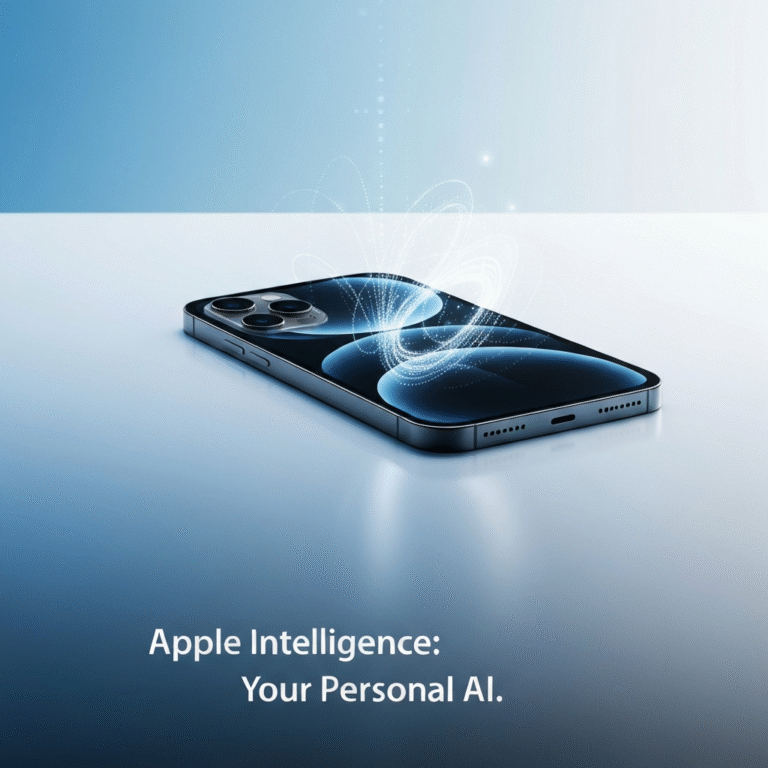
🔑 Key Takeaway
Google’s gemini 3.0 is a next-generation, multimodal AI model designed to understand and process information across text, images, audio, and video. It features advanced reasoning, code generation, and cross-modal understanding. Key versions include “Pro” for complex tasks and “Flash” for high-speed applications. It competes directly with other leading models like OpenAI’s ChatGPT by offering a more integrated multimodal approach from the ground up. Read on for a complete guide to its features, release date, and practical use cases.
Google has officially announced its next-generation AI, set to redefine AI capabilities. This guide answers all your questions about what gemini 3.0 is, its features, and how it compares to other new models like Nano Banana 2. Understanding these new tools is important for tech professionals and enthusiasts looking to stay ahead of the curve. The article provides a deep dive into its features, a comparison with competitors, and a full FAQ.
The Tech ABC is committed to providing practical, expert-led analysis of new AI technologies. You can learn how this new ai language model could change everything from chatbots to data analysis. We’ll start by defining the core technology, introduce its counterpart Nano Banana 2, and then compare it to the models you already know.
ℹ️ Transparency
This article explores gemini 3.0 based on technical reports and industry analysis. Our goal is to inform you accurately based on verified studies, which are cited throughout. This content is reviewed by our internal experts to ensure technical accuracy.
What is gemini 3.0? A Deep Dive
Google’s gemini 3.0 is a family of highly capable, multimodal AI models designed from the ground up to seamlessly understand and reason across text, images, video, audio, and code. Unlike previous models that might stitch together different modalities, Gemini processes them natively using a unified architecture. This approach makes it one of the more versatile and powerful AI tools available. In the technical report from the Gemini Team (2023), the model is described as being “trained to jointly reason across several modalities,” which allows for more sophisticated understanding and interaction.
Key Features of gemini 3.0
The model’s design includes several standout gemini 3.0 features. Its native multimodality allows it to see, hear, and understand different data types simultaneously rather than just processing text. It also possesses advanced reasoning capabilities, enabling it to handle complex, multi-step problems and extract insights from vast amounts of information. Furthermore, it is designed to be highly capable in benchmarks for reasoning, math, and coding. According to the official Google AI Blog, Gemini’s reasoning capabilities allow it to analyze complex information, such as interpreting charts in scientific papers by understanding both the visual data and the accompanying text.
Understanding the “Pro” and “Flash” Versions
To serve different needs, Google offers distinct versions of the model. google gemini pro is the balanced, highly capable model intended for a wide range of advanced tasks. In contrast, Gemini Flash is a lighter, faster model optimized for high-frequency, low-latency tasks like powering chatbots or real-time summarization. The Google Developers Blog (2025) specifies that Gemini Flash is built for speed and efficiency, powering real-time AI in applications requiring instant replies and high-volume processing.
Introducing Nano Banana 2: Google’s Other Surprise
Nano Banana 2 is a specialized AI model focused on creative content generation, designed to complement the broader capabilities of the Gemini family. Its primary function is to assist with specific creative or technical tasks, distinguishing it from a general-purpose model like Gemini. This makes it a powerful tool for professionals who specialize in content creation. The google nano banana model, also known as nano banana ai, is engineered for high-quality output in its designated field.
Practical Use Cases for Nano Banana 2
There are several practical nano banana examples of how this tool might be used. A graphic designer could use a nano banana image editor to create complex visuals from simple text prompts, streamlining their workflow. A marketer might generate dozens of creative ad copy variations in minutes to test different angles for a campaign. A developer could also use it for a specific coding task, such as generating boilerplate code for a new application. As an example of what multimodal AI can do, Google Cloud documentation notes that Gemini can “receive a photo of a plate of cookies and generate a written recipe as a response,” showcasing the kind of cross-modal reasoning that specialized tools can build upon.
Is Nano Banana 2 Part of the Gemini Family?
While developed within Google’s AI division, Nano Banana 2 is positioned as a distinct tool rather than a core part of the Gemini family. Think of Gemini as the powerful, all-purpose engine (like a V8) and Nano Banana 2 as a specialized, high-performance tool (like a turbocharger) for specific tasks. They can work within the same ecosystem but are designed to serve different primary functions, allowing users to choose the right tool for the job.
gemini 3.0 vs. The Competition: A Head-to-Head Comparison
The AI landscape is highly competitive, and users often want to know how gemini 3.0 stacks up against established players like OpenAI’s ChatGPT and others. Understanding the key differences in the gemini vs chatgpt or copilot vs gemini debate can help users select the best model for their needs.
gemini 3.0 vs. ChatGPT 5.1
A key difference between the models lies in their architecture. Gemini was reportedly built to be multimodal from the ground up, while earlier versions of GPT integrated vision and other capabilities later on. This foundational difference may influence how each model handles tasks that require seamless cross-modal reasoning. The
| Feature | gemini 3.0 | ChatGPT 5.1 |
|---|---|---|
| Core Architecture | Natively multimodal from the ground up | Primarily text-based with multimodal capabilities added on. |
| Data Processing | Seamlessly reasons across text, image, video, and audio in a single model. | Uses different components to process different modalities. |
| Integration | Deeply integrated into the Google ecosystem (Workspace, Cloud, Android). | Platform-agnostic, available via API and its own applications. |
| Best For | Complex tasks requiring cross-modal reasoning. | Advanced conversational text generation and creative writing. |
gemini 3.0 vs. Google Assistant
gemini 3.0 is not just an upgrade to Google Assistant; it appears to represent a fundamental replacement of the underlying technology. While Google Assistant is effective at executing commands like setting timers or playing music, Gemini is designed for conversational, multi-step reasoning. This allows it to handle more complex queries, maintain context over longer conversations, and integrate different types of information to provide a more comprehensive response, marking a significant evolution in the gemini vs google assistant dynamic.
FAQ – Your Top Questions Answered
Is Gemini 3 coming out?
Yes, Google has officially announced the development and phased rollout of its next-generation Gemini models. While specific versions like “Gemini 3.0” are part of this ongoing evolution, release timelines can vary for different models (e.g., Pro, Flash) and platforms. The technology is actively being integrated into Google products. For the most precise timing, it’s best to follow official Google AI announcements.
When will gemini 3.0 be released?
Google has not announced a single, official release date for a model named “gemini 3.0,” as the rollout is continuous. Instead, different versions and updates (like Gemini 1.5 Pro) are released periodically. These updates are often made available first to developers via platforms like Google AI Studio and Vertex AI before being integrated into public-facing products.
What does Gemini 3 do?
Gemini 3 is designed to understand, operate across, and combine different types of information like text, code, images, and video. This allows it to perform advanced tasks such as analyzing a chart and explaining it, writing code based on a diagram, or answering complex questions that require reasoning across multiple documents. Its core function is to provide more capable and nuanced AI assistance.
What is google gemini?
Google Gemini is a family of multimodal large language models developed by Google AI. Unlike models that primarily process text, Gemini was built from the start to be “multimodal,” meaning it can natively understand and reason with text, images, audio, video, and code. This makes it a powerful and flexible foundation for a wide range of AI applications.
Is google gemini free?
Access to Google Gemini models comes in both free and paid tiers. A standard version is often available for free through consumer products like the Gemini chatbot. More powerful versions, such as Gemini Pro or those with higher usage limits, are typically accessed through paid subscriptions like the Google One AI Premium plan or via API usage on the Google Cloud Platform.
How much is Gemini 3?
The cost of using advanced Gemini models depends on the specific product and usage. For consumers, access to the most capable models is often included in a monthly subscription, such as the Google One AI Premium plan. For developers using the API, pricing is typically based on the amount of data processed (e.g., per 1,000 characters or tokens), with different rates for different model versions.
Limitations, Alternatives, and Professional Guidance
Research Limitations
It is important to acknowledge that all large language models, including Gemini, have limitations. These models can sometimes produce incorrect information, a phenomenon often referred to as “hallucinations,” and may reflect biases present in their training data. Furthermore, performance on industry benchmarks does not always translate perfectly to real-world applications. Research from Georgetown University’s CSET (2024) highlights that LLMs lack an internal mechanism to verify correctness, leading to risks of “falsehoods” and “disinformation,” as their core function is replicating linguistic patterns, not determining facts.
Alternative Approaches
Users have several viable alternatives to Google’s models. Key competitors include OpenAI’s GPT series, Anthropic’s Claude family of models, and various open-source models that offer greater transparency and customizability. An alternative might be preferable for a specific use case, due to a different pricing structure, or if a project requires open-source technology. The “best” model often depends entirely on the specific task at hand.
Professional Consultation
For critical business applications, relying solely on any single AI model without human oversight is not advisable. Professionals should make it a standard practice to verify any factual, data-sensitive, or critical output generated by an AI. These tools are most effective when used to augment and support human expertise, not as a replacement for it. This approach helps mitigate risks and ensures the quality and accuracy of the final work.
Conclusion
The launch of gemini 3.0 and complementary tools like Nano Banana 2 marks a significant step in Google’s AI strategy, focusing on powerful, natively multimodal capabilities. These models offer new ways for users and developers to tackle complex problems that require understanding across different information types. While these tools are incredibly powerful, it’s important to understand their limitations and use them as a means to support, not replace, human expertise.
As AI continues to evolve, staying informed is key to leveraging its full potential. The Tech ABC serves as a trusted source for demystifying complex technology and providing clear, practical insights. To stay ahead of the latest developments in AI, consider subscribing to our newsletter for practical guides and expert analysis.
References
- Gemini Team. (2023). “Gemini: A Family of Highly Capable Multimodal Models.” arXiv. Available at: https://arxiv.org/abs/2312.11805
- Google AI Blog. “Introducing Gemini: our largest and most capable AI model.” Available at: https://blog.google/technology/ai/google-gemini-ai/
- Google Developers Blog. (2025). “The Gemini 2.0 family expands.” Available at: https://developers.googleblog.com/en/gemini-2-family-expands/
- Stanford Institute for Human-Centered Artificial Intelligence. (2024). “Artificial Intelligence Index Report 2024.” Available at: https://hai.stanford.edu/assets/files/haiai-index-report-2024chapter2.pdf
- Center for Security and Emerging Technology (CSET), Georgetown University. (2024). “Controlling Large Language Model Outputs: A Primer.” Available at: https://cset.georgetown.edu/wp-content/uploads/CSET-Controlling-Large-Language-Model-Outputs-A-Primer.pdf
- Google Cloud. “Multimodal AI Use Cases.” Available at: https://cloud.google.com/use-cases/multimodal-ai




